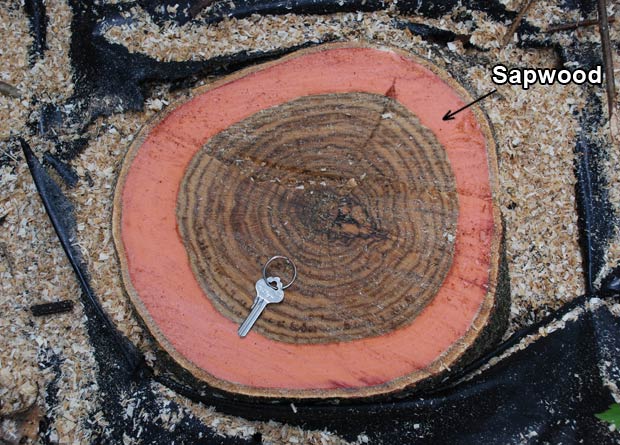Tree plumbing
The sapwood contains xylem, the conducting vessels that carry water and minerals from the roots to the leaves. That's why the surface area of a tree's sapwood is directly proportional to its leaf surface area.
As the tree grows and produces more and more leaves, it must necessarily pump more water. How does it maintain this balance between its sapwood and its leaves? Very simply : by adding girth. When the smallest innermost sapwood layers turn into heartwood (In the living tree, the internal layers of wood, resembling the sapwood, without living cells.), they are replaced by new and larger layers on the outer surface of the sapwood. So the tree has more xylem (Wood conducting network.) to pump water to its leaves. It's just like a set of Russian stacking dolls: the outer one has to be bigger than the ones inside it.
Together, the sapwood and heartwood form the wood that is harvested, which may be completely different from one species to another. For instance, ebony is so heavy – 1,100 kg/m3 – that it doesn't float. And then there's balsa, the lightest wood, which weighs about seven times less than that, barely 170 kg/m3! And some wood is so hard that it has to be cut with tungsten- or diamond-edged tools!





